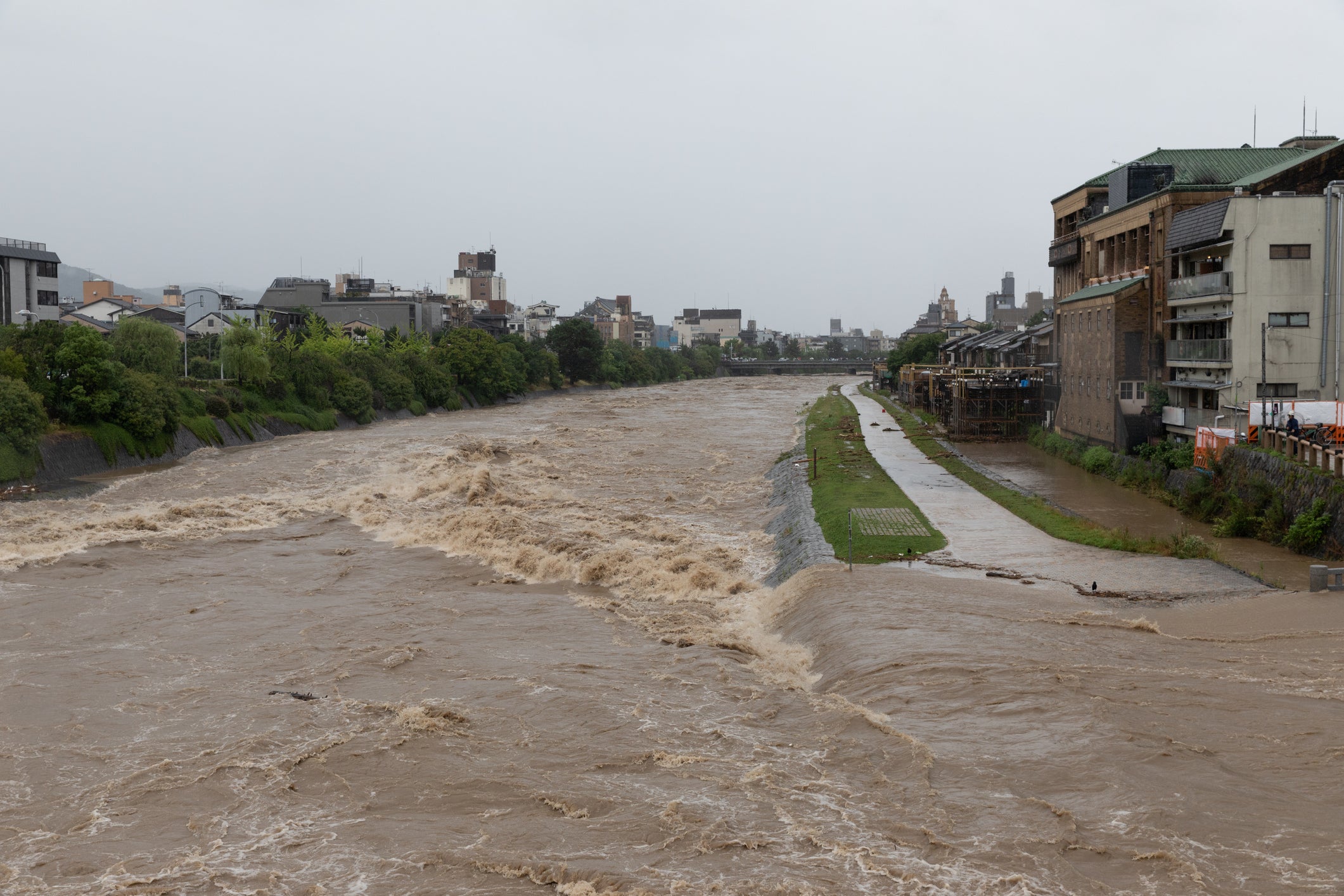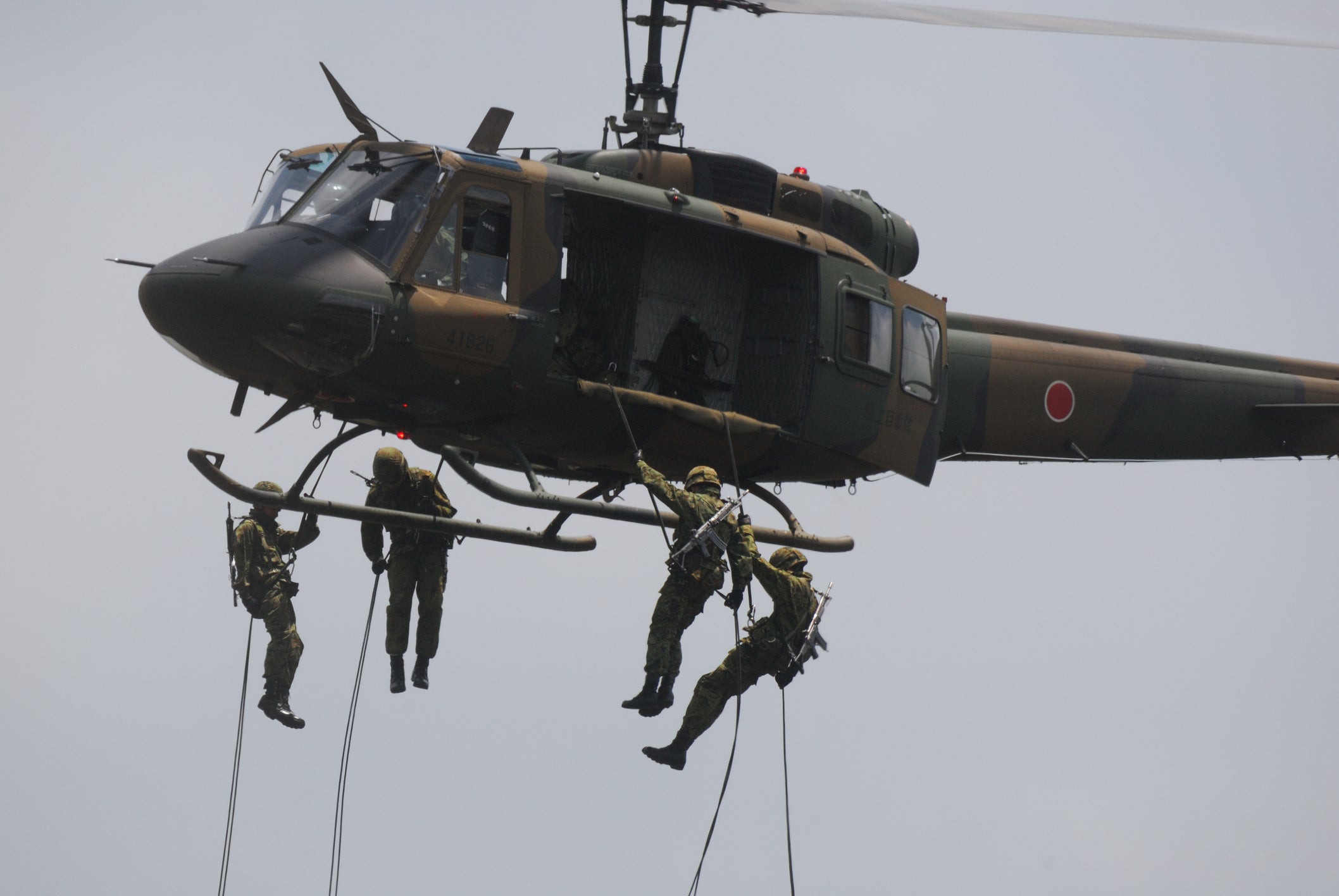The role of the Self-Defense Forces: Disaster prevention and security in Japan
table of contents
Introduction
1. Origin and organization of the Self-Defense Forces
2. Basic role of the Self-Defense Forces
3. Disaster prevention in Japan and the Self-Defense Forces
4. Japan's security and the role of the Self-Defense Forces
5. Issues and future prospects for the Self-Defense Forces
6. Summary
Introduction
This article explores in detail the role played by Japan's Self-Defense Forces. The Self-Defense Forces play an important role in Japan's national defense and security, and at the same time provide effective support during disasters. We will explain its history, legal basis, role, disaster prevention activities, and contribution to security.
1. Origin and organization of the Self-Defense Forces
1-1 Origin of the Self-Defense Forces
Japan's Self-Defense Forces was established after the end of World War II under the constitution of Japan, which was occupied by the Allied Powers. The Japanese Constitution (commonly known as Article 9 of the Constitution), enacted in 1947, stipulates that the Japanese people "abandon war" and stipulates that Japan "will not maintain land, sea, air, or other military forces." . Under this constitution, Japan is authorized to have a "defense force."
However, as the Cold War progressed and the international security environment changed, Japan felt the need to reduce its dependence on external security and strengthen its self-defense capabilities. Against this background, the creation of the Self-Defense Forces was considered.
The official establishment of the Self-Defense Forces was based on the "Self-Defense Forces Law" enacted in 1954. This law established three Self-Defense Forces: the Ground Self-Defense Force, the Maritime Self-Defense Force, and the Air Self-Defense Force. As a result, Japan officially began having an army as the "Self-Defense Forces."
1-2 Organization of the Self-Defense Forces
The Self-Defense Forces consists of three major divisions, each responsible for specific roles and duties.
①Ground Self-Defense Force
- The Ground Self-Defense Force is a division whose primary mission is defense on land, and engages in land combat and defense activities. This includes units such as infantry, tanks, armored vehicles, artillery, and engineers.
②Maritime Self-Defense Force
- The Maritime Self-Defense Force is the division responsible for maritime security and maritime defense. The Japan Maritime Self-Defense Force consists of ships, submarines, aircraft, and special forces, and carries out missions such as maritime patrol, escort, anti-submarine warfare, and disaster relief.
③Air Self-Defense Force
- The Japan Air Self-Defense Force is the division responsible for air defense and security in the aerospace domain. The Japan Air Self-Defense Force operates fighter planes, transport planes, helicopters, and air warning aircraft to carry out air defense of domestic airspace, identification of enemy aircraft, and air rescue in times of disaster.
2. Basic role of the Self-Defense Forces
2-1 Defense
The main role of the Self-Defense Forces is domestic security and defense. This includes elements such as:
① Domestic Defense : The Self-Defense Forces are responsible for the defense of Japan's domestic territory, territorial waters, and airspace. This refers to activities to deal with invasions and attacks from other countries.
② Assistance in exercising the right of self-defense : Based on the Constitution, the Self-Defense Forces have the right to "use the minimum amount of force for self-defense." This is the right to take necessary defensive actions in the event of attack or imminent attack, and we will act accordingly.
③ Exercise of the right of collective self-defense : Japan is considering exercising the right of collective self-defense, aiming to ensure security through cooperation with other countries and contribute to international peace and stability.
2-2 Legal basis of the Self-Defense Forces
The activities of the Self-Defense Forces are based on the Constitution and the Self-Defense Forces Act.
① Constitution : The Japanese Constitution stipulates the renunciation of war and restrictions on the use of force. Article 9 of the Constitution stipulates that ``the United States shall not maintain land, sea, air, or other military forces.'' However, the Constitution allows for the minimum use of force for self-defense, allowing the existence and operation of the Self-Defense Forces.
② Self-Defense Forces Law : The Self-Defense Forces Law is a law that regulates the organization, operation, command, orders, duties, discipline, etc. of the Self-Defense Forces. The Self-Defense Forces Act coordinates the operations of the Self-Defense Forces according to the domestic legal framework and defines the role and activities of the Self-Defense Forces.
2-3 International peace cooperation activities
The Self-Defense Forces also actively participates in international peace cooperation activities, contributing to international peace and stability. This includes activities in cooperation with the United Nations and other countries. Examples of the Self-Defense Forces' international peace cooperation activities include:
① United Nations PKO (Peacekeeping Operations) : The Self-Defense Forces participates in United Nations peacekeeping operations and contributes to resolving international conflicts and maintaining peace. This includes dispatched Self-Defense Forces personnel to participate in peacekeeping operations in conflict areas.
② Counter-terrorism : The Self-Defense Forces also participate in international counter-terrorism activities and provide support to deal with the threat of international terrorism.
③Disaster Relief : The Self-Defense Forces also participate in international disaster relief, providing support for natural disasters and humanitarian crises occurring in other countries.
3. Disaster prevention in Japan and the Self-Defense Forces
3-1 Self-Defense Forces disaster response
Japan is a region where natural disasters such as earthquakes, typhoons, floods, and volcanic eruptions frequently occur, and the Self-Defense Forces function as one of the main agencies to respond to such disasters. Below are details regarding the Self-Defense Forces' disaster response.
①Disaster Dispatch : The Self-Defense Forces are dispatched in response to requests from the government when a disaster occurs. When large-scale disasters such as earthquakes, floods, and typhoons occur, the Self-Defense Forces carry out missions such as rescue operations, evacuation support, and medical support. In particular, Self-Defense Force helicopters and ships provide quick access to disaster areas and assist in rescuing victims.
②Disaster training : The Self-Defense Forces regularly conducts disaster training to ensure prompt response in the event of a disaster. Training includes earthquake simulations, flood preparedness exercises, and fire extinguishing drills. This will help train Self-Defense Forces personnel on appropriate behavior at disaster sites and support the safety and rescue of disaster victims.
③Providing supplies during disasters : The Self-Defense Forces provide food, water, medical supplies, temporary housing, and other supplies to areas where disasters occur, and support the livelihoods of disaster victims. In particular, food assistance is essential for the recovery of disaster-stricken areas.
3-2 Disaster prevention training and preparation
As part of Japan's disaster prevention activities, the Self-Defense Forces conduct training and preparations so that they can respond quickly and effectively in the event of a disaster. Below are the details.
① Emergency response training : The Self-Defense Forces collaborate with local governments and related organizations to conduct emergency response training. Training includes disaster command and control, communications, logistics, and medical relief.
②Disaster countermeasure planning : The Self-Defense Forces formulate disaster countermeasure plans for each region and equip them with appropriate resources and tactics. This includes establishing evacuation routes, designating evacuation centers, establishing communication systems, and establishing a chain of command in the event of a disaster.
③Technology and equipment : The Self-Defense Forces are continuously developing and maintaining the technology and equipment necessary for disaster response. Examples include helicopters, communication equipment, and underwater detectors that help quickly reach disaster sites.
④ Collection and provision of disaster information : The Self-Defense Forces are also engaged in the collection and provision of disaster information, providing weather information, flood predictions, earthquake information, etc., and disseminating early warning information to local residents and related organizations.
4. Japan's security and the role of the Self-Defense Forces
4-1 Disaster response by the Self-Defense Forces
Japan is a region where natural disasters such as earthquakes, typhoons, floods, and volcanic eruptions frequently occur, and the Self-Defense Forces function as one of the main agencies to respond to such disasters. Below are details regarding the Self-Defense Forces' disaster response.
①Disaster Dispatch : The Self-Defense Forces are dispatched in response to requests from the government when a disaster occurs. When large-scale disasters such as earthquakes, floods, and typhoons occur, the Self-Defense Forces carry out missions such as rescue operations, evacuation support, and medical support. In particular, Self-Defense Force helicopters and ships provide quick access to disaster areas and assist in rescuing victims.
②Disaster training : The Self-Defense Forces regularly conducts disaster training to ensure prompt response in the event of a disaster. Training includes earthquake simulations, flood preparedness exercises, and fire extinguishing drills. This will help train Self-Defense Forces personnel on appropriate behavior at disaster sites and support the safety and rescue of disaster victims.
③Providing supplies during disasters : The Self-Defense Forces provide food, water, medical supplies, temporary housing, and other supplies to areas where disasters occur, and support the livelihoods of disaster victims. In particular, food assistance is essential for the recovery of disaster-stricken areas.
4-2 Disaster prevention training and preparation
As part of Japan's disaster prevention activities, the Self-Defense Forces conduct training and preparations so that they can respond quickly and effectively in the event of a disaster. Below are the details.
① Emergency response training : The Self-Defense Forces collaborate with local governments and related organizations to conduct emergency response training. Training includes disaster command and control, communications, logistics, and medical relief.
②Disaster countermeasure planning : The Self-Defense Forces formulate disaster countermeasure plans for each region and equip them with appropriate resources and tactics. This includes establishing evacuation routes, designating evacuation centers, establishing communication systems, and establishing a chain of command in the event of a disaster.
③Technology and equipment : The Self-Defense Forces are continuously developing and maintaining the technology and equipment necessary for disaster response. Examples include helicopters, communications equipment, and underwater detectors that help quickly reach disaster sites.
④ Collection and provision of disaster information : The Self-Defense Forces are also engaged in the collection and provision of disaster information, providing weather information, flood predictions, earthquake information, etc., and disseminating early warning information to local residents and related organizations.
5. Issues and future prospects for the Self-Defense Forces
5-1 Regional stability
The Self-Defense Forces play an important role in Japan's security and ensuring stability in the Asia-Pacific region. Below are details about the role of the Self-Defense Forces in relation to regional stability.
① Defense cooperation : The Self-Defense Forces will strengthen defense cooperation between Japan and its allies and friendly countries, supporting regional peace and stability through joint training and information sharing. In particular, Japan focuses on security cooperation with the United States, and the Self-Defense Forces and the American military sometimes conduct joint exercises.
②Response to regional conflicts : In the event of regional conflicts or military tensions in the Asia-Pacific region, the Self-Defense Forces will be tasked with strengthening Japan's defense and contributing to regional stability.
5-2 Relationship with North Korea
Relations with North Korea are an important factor in Japan's security. North Korea's nuclear and missile programs and threats pose a security concern to Japan, and the Self-Defense Forces play the following roles:
①Missile Defense : The Self-Defense Forces operate missile defense systems deployed within Japan to defend against missile attacks from North Korea. This system includes interceptor missiles and radar.
②Information gathering : The Self-Defense Forces collect information on North Korea's movements and threats, and provide the information to the government. Intelligence gathering includes military intelligence, intelligence gathering satellites, and communications intelligence.
③ Preparedness for emergencies : The Self-Defense Forces is preparing to respond quickly in the event that the threat from North Korea increases. This includes the mobilization of Self-Defense Forces personnel and maintenance of equipment.
c. Self-Defense Force equipment and technology
The Self-Defense Forces are incorporating the latest equipment and technology to improve their capabilities to fulfill their security role. Below are the details.
① Self-Defense Force Equipment : The Self-Defense Force operates advanced military equipment such as tanks, fighter jets, submarines, and helicopters. This has improved Japan's defense capabilities and enabled it to carry out missions both domestically and internationally.
② Communications and information technology : The Self-Defense Forces utilize the latest communications and information technology to improve the efficiency of information gathering, command and control, and operational operations. This allows for a quick and effective response.
③Cyber defense : In order to counter cyber attacks, the Self-Defense Forces is training cybersecurity experts and strengthening its cyber defense capabilities.
6. Summary
1. Origin and organization of the Self-Defense Forces
- The Self-Defense Forces were established after World War II based on Article 9 of the Constitution.
- The Self-Defense Force is made up of three divisions: the Ground Self-Defense Force, the Maritime Self-Defense Force, and the Air Self-Defense Force.
2. Basic role of the Self-Defense Forces
- The Self-Defense Forces' primary focus is domestic security and defense.
- Based on the Self-Defense Forces Act and the Constitution, we are involved in the exercise of the right of self-defense and the right of collective self-defense.
- We will actively participate in international peace cooperation activities and contribute to international peace and stability.
3. Disaster prevention in Japan and the Self-Defense Forces
- The Self-Defense Forces play an important role in Japan's response to natural disasters.
- We carry out disaster countermeasures through disaster dispatch, training, supplies, technology and equipment, information gathering, emergency response, etc.
4. Japan's security and the role of the Self-Defense Forces
- The Self-Defense Forces ensure stability in the Asia-Pacific region and contribute to domestic and international security.
- In relations with North Korea, it plays a role in missile defense, intelligence gathering, and emergency preparedness.
- We are incorporating the latest equipment and technology to strengthen our cyber defense capabilities.








